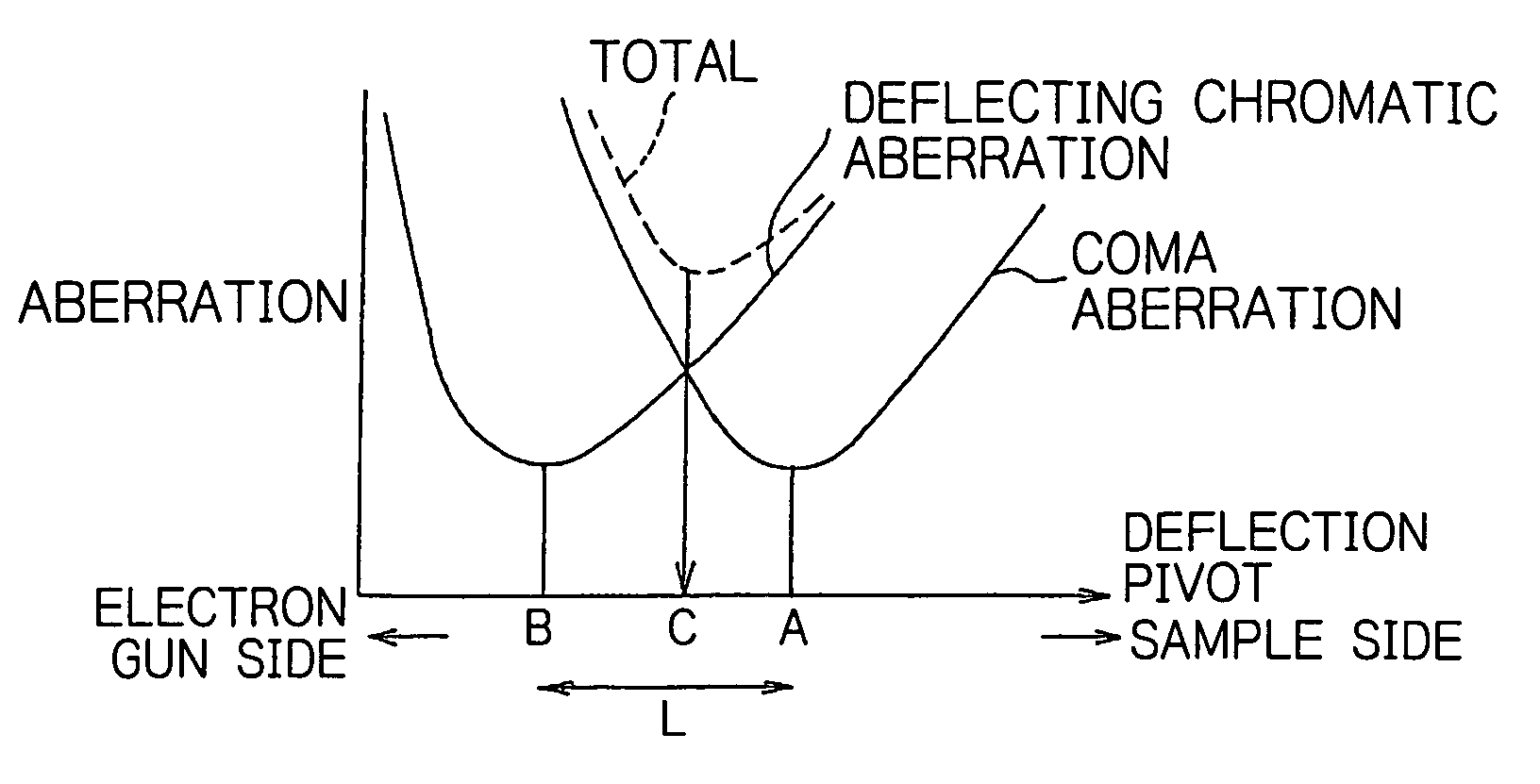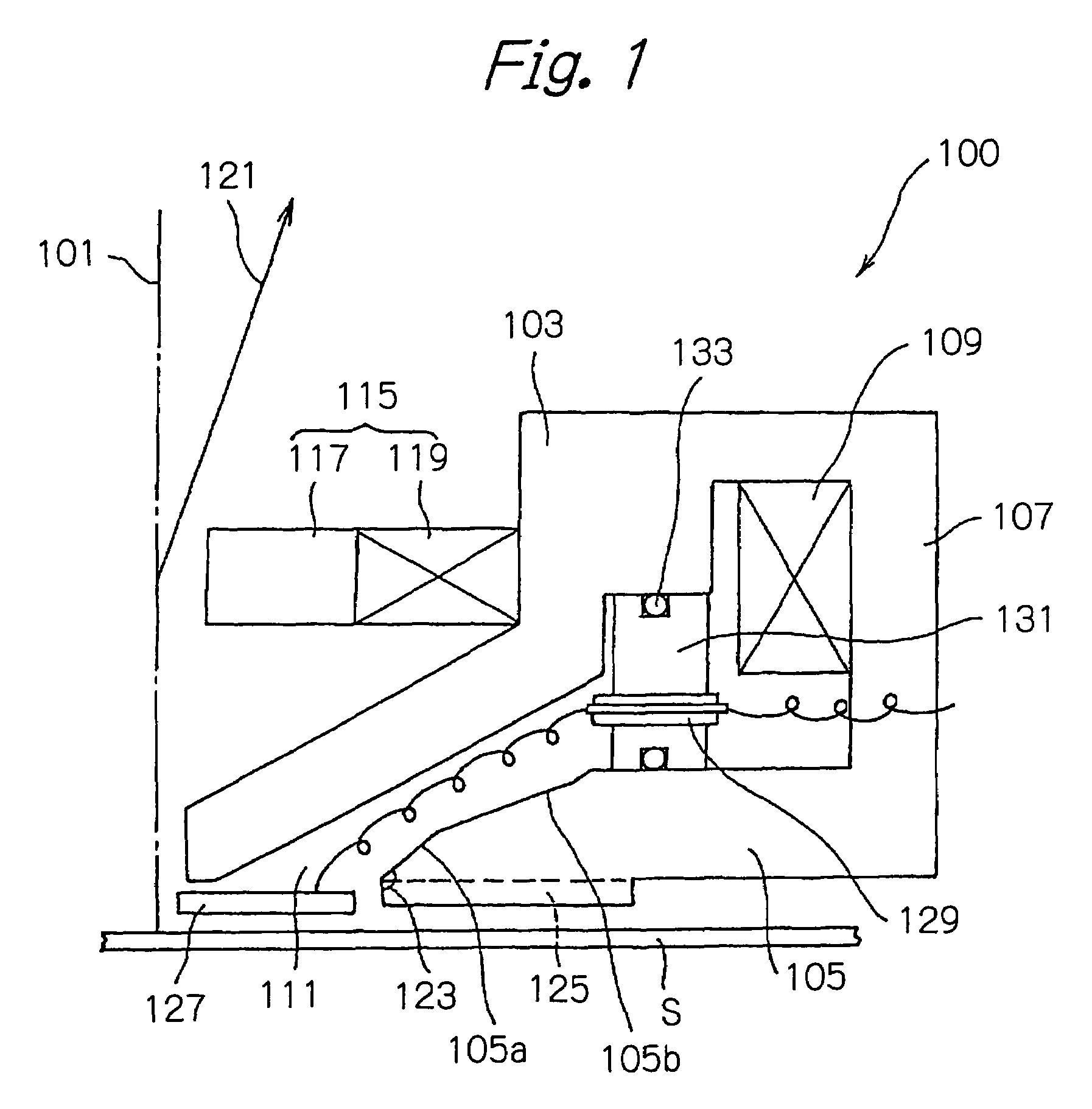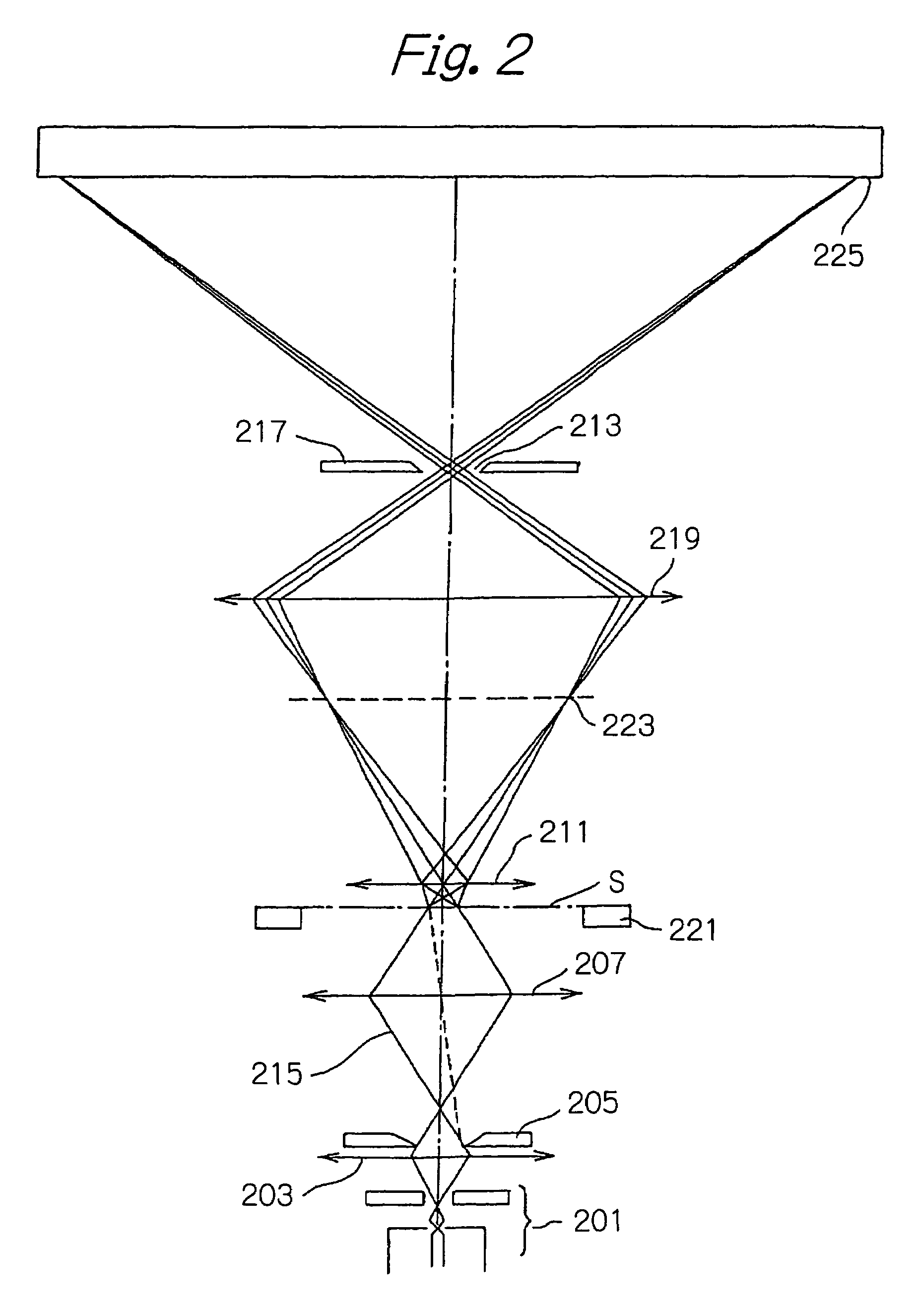Objective lens, electron beam system and method of inspecting defect
a technology of electron beam and lens, applied in the direction of instruments, magnetic discharge control, nuclear engineering, etc., can solve the problems of axial magnetic distribution, inability to obtain high resolution images, and large number of ampere turns (ats) needed for operating lenses, etc., to achieve good edge roughness and high yield rate
- Summary
- Abstract
- Description
- Claims
- Application Information
AI Technical Summary
Benefits of technology
Problems solved by technology
Method used
Image
Examples
first embodiment
[0230]FIG. 1 shows a cross-sectional shape of an objective lens system 100 to be used for an electron beam system in accordance with the present invention 1-1. An actual structure of the objective lens system 100 can be represented by rotating it around the optical axis 101. An electron gun is disposed at an upper side of FIG. 1, although not shown herein, and primary electron beams generated from the electron gun are focused onto the surface of a sample S through the optical axis with the objective lens system 100. The objective lens system has a structure surrounding the exciting coil 109 with the inner magnetic pole 103 disposed on the side of the optical axis, the outer magnetic pole 105 disposed on the side opposite thereto, and the magnetic circuit 107, and it is arranged such that the lens gap 111 is located having an aperture directed toward sample S. Reference numeral 115 refers to a beam separator for deflecting secondary electrons to be emitted from the sample toward samp...
second embodiment
[0237]FIG. 2 shows an optical system of an inspection apparatus for a transmission mask using the objective lens system according to the present invention. The optical system of the inspection apparatus may be disposed in such a manner that the LaB6 cathode electron gun 201 is operated under space-charge limit conditions, electrons generated from the electron gun 201 are condensed with the condenser lens 203, the shaping rectangular aperture 205 are irradiated with the electron beams at a homogeneous intensity, and an image is formed on a stencil mask (sample) 209 with the irradiating lens 207. Then, a cross-over image formed with the electron gun is formed on a principal plane of the objective lens 211. The objective lens 211 is set to have a still larger axial magnetic field at the position of the sample S. Therefore, the electrons emitted in the normal direction from the sample S do not cross the optical axis at a cross-over 213.
[0238]Hitherto, the principal light beams from the ...
third embodiment
[0243]FIG. 3 shows an embodiment in which the objective lens according to the present invention 1-3 is used for an optical system for irradiation with multi-beams. The electron gun 301 is arranged such that a LaB6 cathode electron gun is operated under space-charge limit conditions in substantially the same manner as described in the embodiment as shown in FIG. 2. The electron beams emitted from the electron gun 301 form a cross-over at the NA aperture 307 in an association of the condenser lens 303 with the rotating lens 305 whose rotation can be adjusted. Multiple beams are formed by mounting the multi-aperture 309 in front of the rotating lens 305. The condenser lens 303 adjusts a density of beam current at the multi-aperture by varying a cross-over magnification at the NA aperture 307 without forming a cross-over in association with the lens 305 disposed adjacent thereto. In the optical system, all the lenses are needed to align the posture of the multiple beams with the ordinat...
PUM
 Login to View More
Login to View More Abstract
Description
Claims
Application Information
 Login to View More
Login to View More - R&D
- Intellectual Property
- Life Sciences
- Materials
- Tech Scout
- Unparalleled Data Quality
- Higher Quality Content
- 60% Fewer Hallucinations
Browse by: Latest US Patents, China's latest patents, Technical Efficacy Thesaurus, Application Domain, Technology Topic, Popular Technical Reports.
© 2025 PatSnap. All rights reserved.Legal|Privacy policy|Modern Slavery Act Transparency Statement|Sitemap|About US| Contact US: help@patsnap.com



